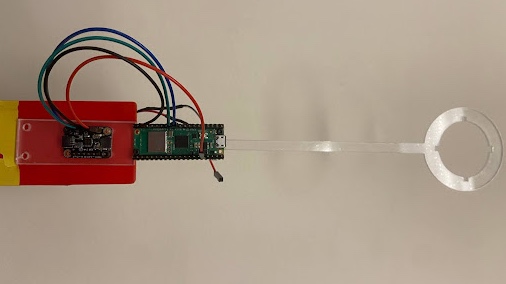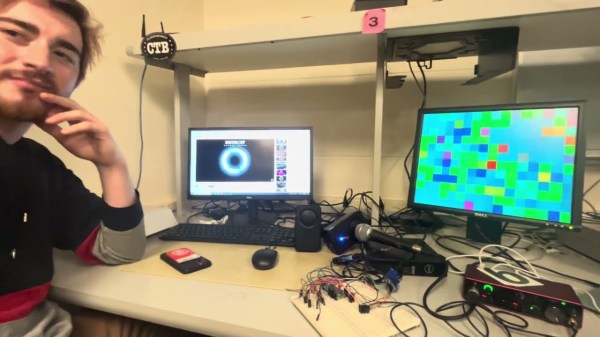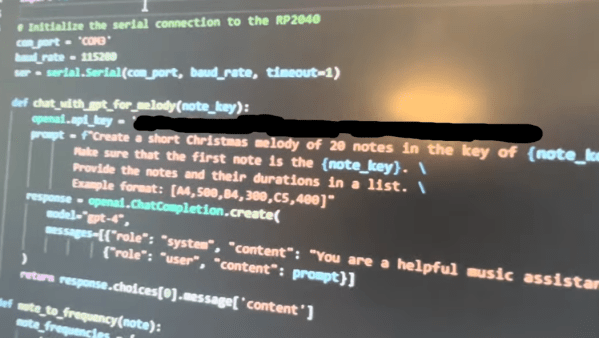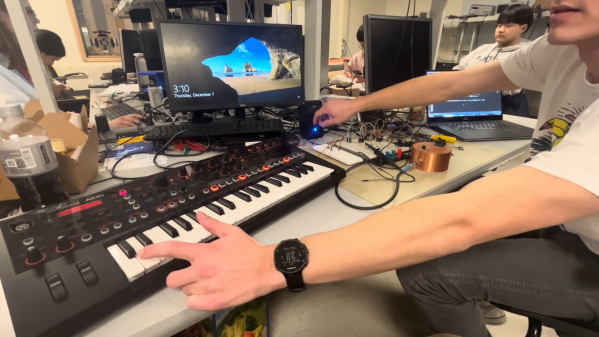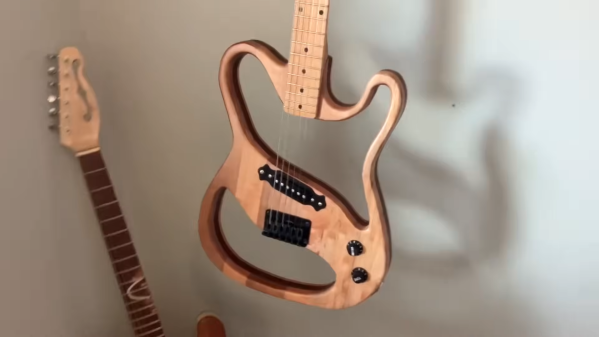The conductor of an orchestra may look unassuming on the street, but once they step onto their podium, they are all powerful. If you’ve ever wanted to go mad with power in the comfort of your own home, try this electronic orchestra baton by [Larry Lu] and [Kathryn Zhang].
The wireless baton “peripheral” part of the system uses a Pico W and an IMU to detect the speed of conducting a 4/4 measure. That information is then transmitted to the “central” Pico W access point which plays a .wav at the speed corresponding to the conductor’s specified beats per minute (BPM). Setting the baton down will pause the visualizer and audio playback.
The “central” Pico W uses direct memory access (DMA) and SPI communication to control the audio output and VGA visualization. Since most .wav files have a sample rate of 44.1 kHz, this gave the students a reference to increase or decrease the DMA audio channel timer to control the playback.
Want some more musical hacks? Checkout this auto-glockenspiel or how the original iPod was hacked.

